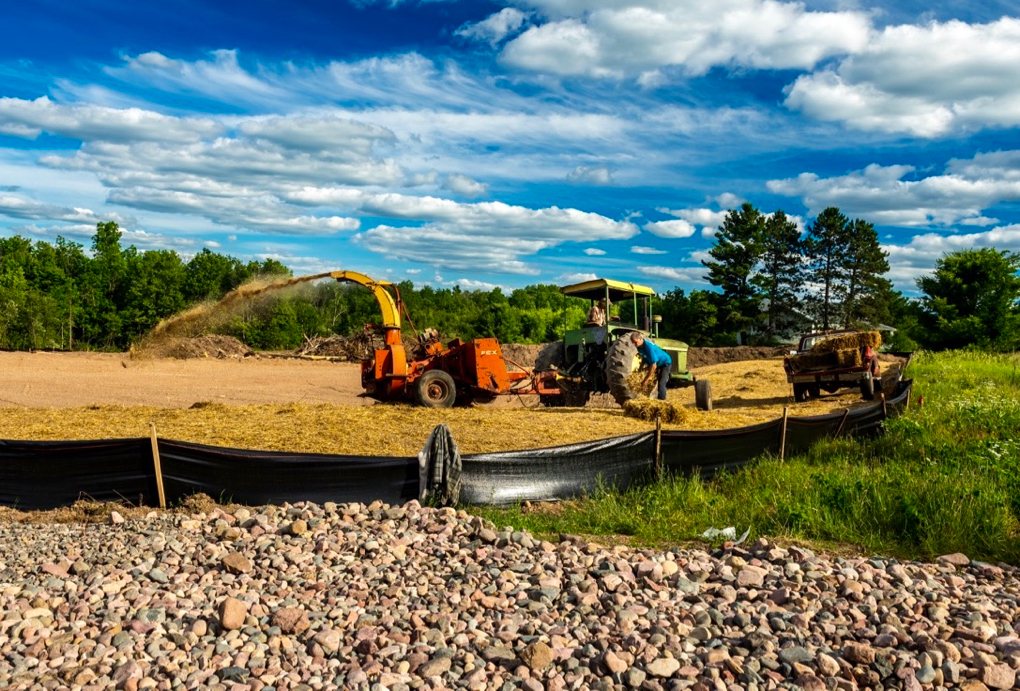Dear Friends,
After the two construction sites were graded by the team of sevadars, the soil at the sites needed to be stabilized so that rain storms don’t carry sediment into the nearby creek and the Chippewa River. The State of Wisconsin has strict rules that describe how the soil is to be stabilized.
First, our contractors used tractor-drawn equipment to smooth uneven surfaces and break up clumps of soil. One of the most common tools is a disc, which cuts through vegetation, sod, or hard soil and partly turns or tills it into the soil’s surface. Here’s a photo of a tractor pulling a disc and roller across the Meeting Hall site:
Here’s a photo of the kitchen/dining hall area that has been prepared for grass seeding:
The next step in the stabilization process is to plant grass seed, especially on the slopes that could be easily eroded by rain. This is commonly done by spreading a thin layer of grass hay mulch on the soil, and using a seed drill to insert the grass seed into the loose soil. The mulch helps retain soil moisture, prevents movement of seed and soil erosion, reduces surface crusting, and helps to moderate soil temperatures. Mulching usually helps grass establish faster and results in a more uniform lawn. Our contractors used a seed mix that contains Kentucky Bluegrass, Fescue, Perennial Ryegrass, and Oat Grass. Then, we wait for the rain to come, and watch the grass grow!
Here’s a photo of workers spreading grass mulch on the exposed soil at the parking lot site. The bales of mulch are loaded into a tractor-powered bale processor that pulverizes and sprays the mulch evenly over the site.
Stay tuned for the next blog, where you’ll see photos of the successful outcome of our erosion-control efforts!
With warmest regards,
Paul Bauer
Chair of ISHA Building & Fund-Raising Committee



